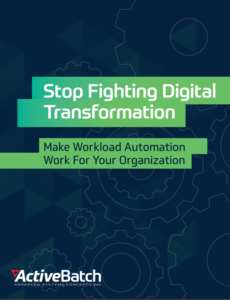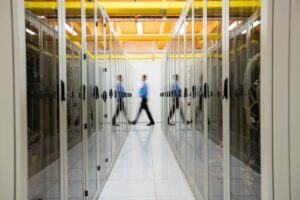Data Center Industry Trends: What To Know And Prepare For

The data center market continues to show a robust growth rate as both personal and corporate data booms. Revenue in the U.S. data center market is expected to grow to $99.97 billion in 2023 to $28.46 in 2028, according to Statista.com. Much of this growth is being driven by new technologies that both require and enable greater efficiencies, bringing new cloud service providers and business models within reach. This is supported by data that shows Network Infrastructure is the largest source of market growth with a projected market volume of $44.4 billion in 2023, according to Statista.com.
Additionally, organizations are increasingly reliant on data center services, from colocation to hyperscale, as they adapt to new challenges brought on by COVID, economic challenges and market growth trends.
Major data center trends include:
- Growth in hyperscale, colocation and multi-tenancy
- Workload repatriation
- Rising cost of outages
- Increased demand for edge compute
- Supply chain issues causing limits in future capacity
- Concerns over the sustainability of data centers
- The need to go waterless, where possible
- Expansion of automation
- Explosion of data
In general, IT infrastructure will continue to become more distributed. Enterprises will have key infrastructure in separate geographic locations in order to bring compute closer to the consumer, while a rising interest in private cloud will drive adoption of hybrid cloud.
Gartner expects that 60% of enterprise IT infrastructures will “focus on centers of data, rather than traditional data centers,” underscoring the impact that emerging technologies will have on digital infrastructure over the next few years.
The Hyperscale Explosion
The COVID pandemic forced organizations to pursue advancements in digitalization in order to support new services, remote work and virtual, well, everything. This shift required flexibility and scalability to enable businesses to quickly pivot, roll-out and scale key services. The result was a boon for cloud service providers. Amazon’s revenue for Amazon Web Services (AWS) grew 16% in the first quarter of 2023, according to businessinsider.com. This growth rate is seen across the globe, with data center construction in Europe growing at a CAGR of 5.23% from 2022 to 2023, according to GlobalNewsWire.com.
The growth in hyperscale cloud computing isn’t likely to wane in coming years. At least, that is the signal from major hyperscale providers. As of 2021, there are more than twice as many hyperscale data centers as there were just a few years ago, with investments continuing to grow to meet an expected increase in demand for cloud infrastructure. This includes Microsoft’s plan to build upwards of 100 new data centers per year.
Regardless, most organizations are still relying on on-premises data centers to reduce latency and improve resiliency while meeting compliance requirements. That said, organizations are not generally expanding their data center footprints — almost all growth is from data center providers, including data center colocation, hyperscale and multi-tenancy.
Don’t let IT complexity hamper your digital goals
Get the latest trends and data on what’s driving transformation and how IT teams address these challenges.
Workload Repatriation Is Still Common
Organizations are still figuring out what workloads should run in public-cloud versus private-cloud or on-premises infrastructure. The reasons for this are varied. Cost overruns continue to play a role especially as organizations seek to stabilize their operational expenses. Security concerns also play a role in moving workloads out of the public-cloud.
Security concerns also play a role in moving workloads out of the public cloud, from the United States to Europe. This in turn has spurred faster growth in private cloud computing when compared to public cloud. New Gartner research found that global spending on services in the public cloud is expected to grow 21.7% to 2023, from $491 billion in 2022 to $597.3 billion in 2023.
Workload repatriation does seem to be slowing. The same research from AFCOM found that repatriation towards on-premises and colocation decreased from 72% to 58% in 2021. More organizations are using hybrid cloud deployments than ever before, helping to slow the pace of repatriation as organizations stabilize policies for placing workloads.
That said, data regulations and emerging technologies are complicating data centers, meaning repatriation and workload mobility will continue to be where advancements are focused over the coming years.
Data Center Outages Are Becoming More Expensive
Overall, data center outages are becoming less frequent. Data centers are more reliable than ever thanks to improvements in technology and processes. But that’s not to say that outages aren’t still common: the Uptime Institute found that 80% of data center operators experienced an outage over the past three years. Additionally, more outages costing more than $100,000 has significantly increased recently.
The Uptime Institute also reports that the average cost of outages has been growing in recent years. Where outages resulting in losses of over $100,000 were relatively rare in 2019, today, over 60% of outages cost the business over $100,000. The percentage of outages that cost $1 million or more increased from 11% to 16% in 2022.
A growing share of outages are also preventable. 79% of downtime could have been avoided with improved processes and policies, according to the Uptime Institute. Networking issues are the top cause of all IT downtime cases over the past three years. With the growing rise of cloud technologies, more outages are being caused by software, network and systems issues, according to the Uptime Institute.
Moving forward, operators will need to reduce human error by eliminating manual interventions and enforcing best practices for data center management.
Data Centers Are Turning Green
While not directly related to performance goals, sustainability and environmental initiatives are a growing trend for businesses. Data centers, which traditionally have large carbon footprints because they require large volumes of power and water, are being looked at as opportunities to turn a business greener as part of climate change initiatives.
As consumers and regulators become more focused on environmental issues, data centers are finding ways to reduce water requirements and emissions as well as improving energy efficiency. This push is being accelerated by the growing number of areas experiencing water shortages and droughts. Tactics for meeting green goals include new cooling systems as well as renewable energy. Some of the largest data center operators are beginning to deploy lithium ion batteries to help mitigate the variability of renewable energy sources such as wind and solar. Other data centers are using air-cooled chillers to move water in a closed loop, thus saving significant amounts of water, according to Data Center Frontier.
Exponential Data Creates New Challenges
Data is the new oil. But unlike oil, we can create as much data as we want, or, at least, as much as we can handle.
Towardsdatascience.com reports that the volume of data forecasted to be created by 2030 will be 572 zettabytes – a 10x growth from the amount of data we have in 2023. Much of this growth is being driven by new technologies such as the internet of things (IoT), edge computing and 5G, enabling greater data collection. The use of data-intensive tools such as artificial intelligence, machine learning and big data is also expected to grow.
However, this exponential growth in data is about to hit a wall. Specifically, a technological wall — existing data storage technologies will not be able to handle the volumes of data that are expected to be normalized by the end of the decade. Gartner predicts that, by 2025, traditional computing technologies will hit a “digital wall” that forces organizations to shift to new computing paradigms.
What do these new computing paradigms look like? New storage technologies such as glass storage and DNA storage, supported by nanotube computing, memristors or even neuromorphic computing.
In the meantime, data center operators are doing what they can to increase rack density, improving overall compute without expanding their on-premises footprint. This is made possible in part through new cooling techniques such as liquid cooling.
Automation Is Becoming Critical
Data center automation market size is expected to reach $27.35 billion by 2029, up from $7.4 billion in 2021, according to a report by Fortune Business Insights. Growth in data center automation increased in response to COVID-19 as businesses accelerated their digital initiatives. According to the Uptime Institute, 73% of data center operators have increased the use of automation as a direct result of challenges stemming from the COVID-19 crisis.
Automation is helping data center operators meet a variety of goals. By eliminating manual interventions, data center operators can reduce the risk of downtime while streamlining data processes and provisioning compute to meet real-time demand.
Additionally, data centers are finding it difficult to hire and retain experienced personnel. The IT skills gap is expected to persist for the foreseeable future as organizations compete for top talent. By automating manual tasks, organizations can accomplish more without needing to hire more full-time employees.
Automation platforms can also help ensure smooth transitions as workloads migrate to new data center infrastructure. Whether moving workloads to the cloud, repatriating or replacing racks, automation platforms can provide change management capabilities that make it easy to synchronize environments and to manage workloads across diverse infrastructure.
Preparing The Data Center For Future Challenges
Over the next few years, new technologies will drastically improve efficiency, automation and storage in data centers. This includes high-performance CPUs designed for AI, new storage technologies and more.
Organizations will need to seamlessly integrate these new technologies while ensuring workload migrations and mobility. Workload automation software will be critical to meeting these challenges, enabling IT teams to quickly integrate new systems and software for reliable workload management across a diverse, distributed ecosystem.
Frequently Asked Questions
Yes, as the amount of data continues to increase, the number of data centers is also growing. Demand for data centers is expected to double between 2022 and 2030, according to McKinsey. The demand is being further ramped up by the interest of investors. Deals have grown from $34 billion in 2020 to $48 billion in 2021.
Data centers face several key challenges, including power usage, security and cooling issues. They use significant amounts of power to run the servers and provide cooling for the heat they generate, creating environmental concerns. Additionally, ensuring the security of the data from both cyber attacks and physical threats is another key issue.
Yes, the demand for data centers is expected to remain strong as both personal and business data continues to increase significantly. Couple this with interest from investors, and data centers are expected to grow from $18.1 billion in 2023 to $28.46 in 2028.
Ready to simplify your data warehousing with workload automation?
Schedule a demo to watch our experts run jobs that match your business requirements in ActiveBatch. Get your questions answered and learn how easy it is to build and maintain your jobs.








